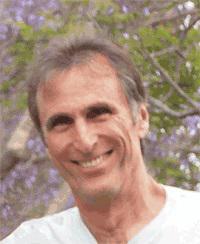Prescription drug abuse, rampant among all demographics, is also affecting the medical community. A recent review indicates that more than one hundred thousand medical professionals—doctors, nurses, technicians, and aides—misuse or are addicted to medications that clearly affect their performance in the workplace.
A number of factors are at work that are, in combination, unique to this subset of substance abusers:
· Access—Doctors and nurses especially have proximity to prescription drugs.
· Stress—The medical profession is a high-stress environment. Long hours, excessive workload, exposure to trauma and tragedy, competition, bureaucratic hurdles, and other dynamics within the medical field can lead to frustration and overload.
· Denial—Always present among addicts, denial is especially problematic among doctors and nurses, who believe their training and perspective on the issue of addiction exempts them from its dangers.
· Ability to hide the problem—More than most people, medical professionals know what addiction looks like and how it presents to people like themselves; therefore, they have an edge when it comes to masking the signs of prescription drug abuse.
Furthermore, the health care field does little in the way of policing its own. Monitoring of drug inventories is inadequate, and screening for substance abuse is rare. Revocation or suspension of professional license is rare and occurs—if at all—only after multiple and severe transgressions.
The most common drugs abused by this segment are opioids like fentanyl and oxycodone. Abuse of a combination of diet pills and anxiety medications like Valium is also prevalent, along with sleep medications. The degree of impairment caused by these drugs puts the public at risk in a number of ways. Sloppy diagnoses, botched operations, and failure to observe safety procedures are just a few of the potential dangers. One hospital tech injected patients’ pain medications and refilled the syringes with a saline solution; forty-six people were infected with hepatitis and eight thousand had to be tested for it.
Most states have treatment facilities specifically for health care workers, generally in conjunction with licensing boards or professional societies, but only a fraction of the affected workers enroll in these programs. Furthermore, those who complete the programs are exempt from disciplinary action and public records do not reflect their entry into treatment or the reasons for it. The reasoning behind this is that doctors in particular will resist treatment if there is a built-in professional cost to seeking help.
The US Department of Justice suggests that peers should take responsibility for monitoring healthcare workers. Professionals in the field of addiction claim that the stigma attached to drug dependence is responsible for addicts’ shame and secrecy, and subsequently for their reluctance to seek help.
In the UK, a recent program at a major hospital reports encouraging results in terms of successful treatment of medical professionals. Besides the critical consideration of patient safety, a major impetus for the program was the idea that healthcare workers have great value to the community, and as such, they deserve investment in their well-being. Their extensive training and experience would otherwise be negated by untreated addiction resulting in damage to the medical community as a whole.
Meanwhile, in the US, numerous private treatment facilities specialize in — and have specialty units for,— providing care specifically for the substance-abusing medical professional.


